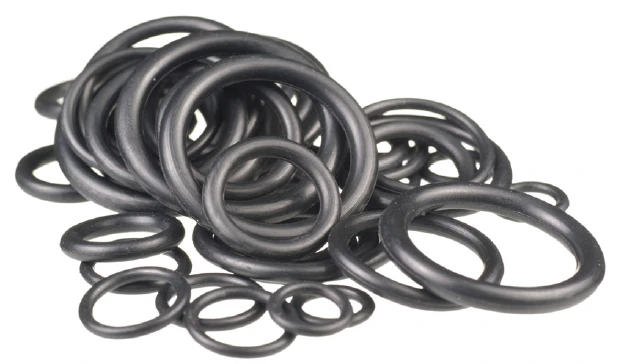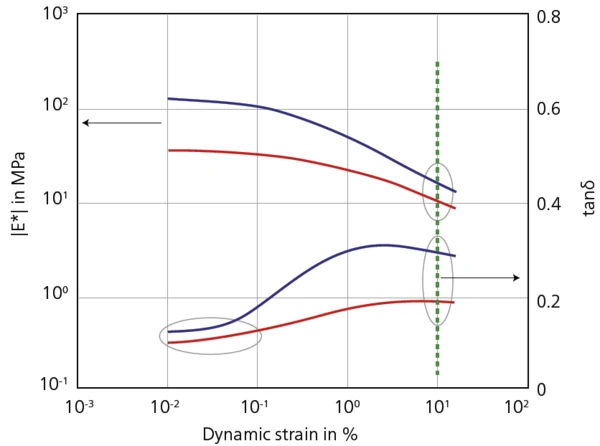Introduction
When analyzing seals or gaskets, a fast dynamic response which is directly related to their dynamic-mechanical material properties is of primary interest. Typically, if “leakage” occurs, restoring forces are not strong enough. Unfortunately, these properties depend on the temperature and, of course, on the applied frequency. DMTA provides a powerful means of analyzing these failure limits by applying dynamic StrainStrain describes a deformation of a material, which is loaded mechanically by an external force or stress. Rubber compounds show creep properties, if a static load is applied.strain sweeps performed under different load conditions like preload, frequency or temperature. Ideally suited for such measurements is the Eplexor® 500 N by NETZSCH GABO Instruments (figure 1).

The following example illustrates the situation in more detail:
- Static deformation of about 20%
- Frequency of 10 Hz
- High restoring force required
- Low damping, e.g., high elasticity required
An O-ring (see figure 2) with an outer diameter of 10 mm and a ring thickness of 1 mm was stressed with a static prestrain of about 20% of the thickness. In a second step, a mechanical oscillation with a dynamic deformation having amplitudes of between 1% and 10% of the thickness was superimposed. The test frequency was 10 Hz. During the first half of the oscillation period, the gasket was compressed, whereas during the second half, the gasket was released. Ideally, an O-ring should react “fast enough” and follow the movement induced by the oscillation, even in the second half during the procedure of release.

To ensure perfect sealing, it is imperative that no “gap” occur between the O-ring and the mechanical counterpart.
The O-ring is able to fulfill this if damping (tanδ) is quite low and enough energy is stored elastically (= high storage modulus).
If damping is too high (even at an acceptable level of the modulus), the O-ring cannot follow the motion and consequently, a “leak” occurs.
Figure 3 shows the test results for two elastomer compounds. Sample 1 (blue) shows a higher modulus than sample 2 (red). The tanδ of the two materials is more or less identical within a StrainStrain describes a deformation of a material, which is loaded mechanically by an external force or stress. Rubber compounds show creep properties, if a static load is applied.strain range of 0.01% to 0.1%.
It would appear that material 1 provides much better dynamic gasket properties, if the application is restricted to small deformations only.
However, the mechanical properties of both materials change drastically at higher deformations (between 1% and 10% dynamic StrainStrain describes a deformation of a material, which is loaded mechanically by an external force or stress. Rubber compounds show creep properties, if a static load is applied.strain amplitude).

Although the moduli at 10% dynamic StrainStrain describes a deformation of a material, which is loaded mechanically by an external force or stress. Rubber compounds show creep properties, if a static load is applied.strain amplitude are not that far away from each other, the tanδ value of sample 1 (blue) is at the same deformation, roughly 50% higher than the tanδ value of sample 2 (red). This means that the energy losses are much higher. The dynamic restoring properties of sample 1 (blue) worsen significantly with increasing dynamic StrainStrain describes a deformation of a material, which is loaded mechanically by an external force or stress. Rubber compounds show creep properties, if a static load is applied.strain. Consequently, leakage can occur. Taking these considerations into account, sample 2 would be the preferred material for use in a sealing application.
Conclusion
The Eplexor® 500 N offers the option for direct comparison of parts with differing compositions and gives insight into a material’s behavior. It is therefore advantageous not only in quality control but also in research and development tasks. In the case of seals and gaskets, it is possible to measure the damping behavior at high deformations.